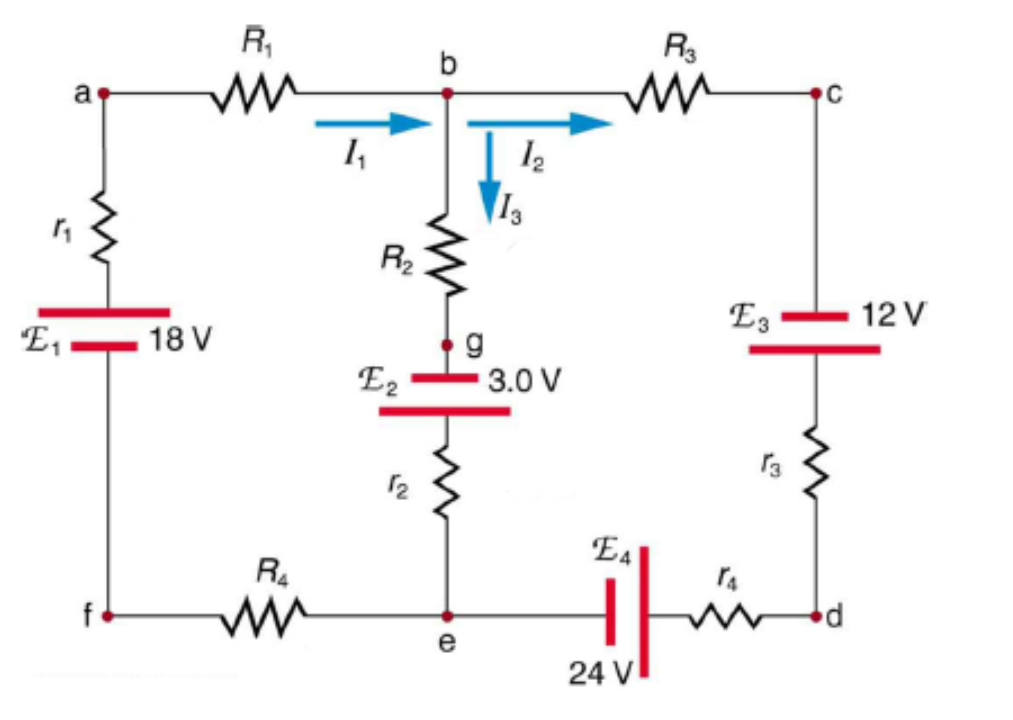How can I1, I2, and I3 be found? The resistances are R1 = 8 Ω, R2 = 6 Ω, R3 = 15 Ω, R4 = 20 Ω, r1 = 0.75 Ω, r2 = 0.5 Ω, r3 = 0.25 Ω, and r4 = 0.5 Ω.
How can I1, I2, and I3 be found? The resistances are R1 = 8 Ω, R2 = 6 Ω, R3 = 15 Ω, R4 = 20 Ω, r1 = 0.75 Ω, r2 = 0.5 Ω, r3 = 0.25 Ω, and r4 = 0.5 Ω.
Principles of Physics: A Calculus-Based Text
5th Edition
ISBN:9781133104261
Author:Raymond A. Serway, John W. Jewett
Publisher:Raymond A. Serway, John W. Jewett
Chapter21: Current And Direct Current Circuits
Section: Chapter Questions
Problem 45P: The ammeter shown in Figure P21.45 reads 2.00 A. Find I1, I2, and . Figure P21.45
Related questions
Question
How can I1, I2, and I3 be found?
The resistances are R1 = 8 Ω, R2 = 6 Ω, R3 = 15 Ω, R4 = 20 Ω, r1 = 0.75 Ω, r2 = 0.5 Ω, r3 = 0.25 Ω, and r4 = 0.5 Ω.
Thank you!

Transcribed Image Text:R,
a
C
1,
R2
E3
12 V
18 V
E2
3.0 V
12
E4
R4
e
24 V
Expert Solution
This question has been solved!
Explore an expertly crafted, step-by-step solution for a thorough understanding of key concepts.
Step by step
Solved in 5 steps with 5 images

Knowledge Booster
Learn more about
Need a deep-dive on the concept behind this application? Look no further. Learn more about this topic, physics and related others by exploring similar questions and additional content below.Recommended textbooks for you

Principles of Physics: A Calculus-Based Text
Physics
ISBN:
9781133104261
Author:
Raymond A. Serway, John W. Jewett
Publisher:
Cengage Learning

Principles of Physics: A Calculus-Based Text
Physics
ISBN:
9781133104261
Author:
Raymond A. Serway, John W. Jewett
Publisher:
Cengage Learning